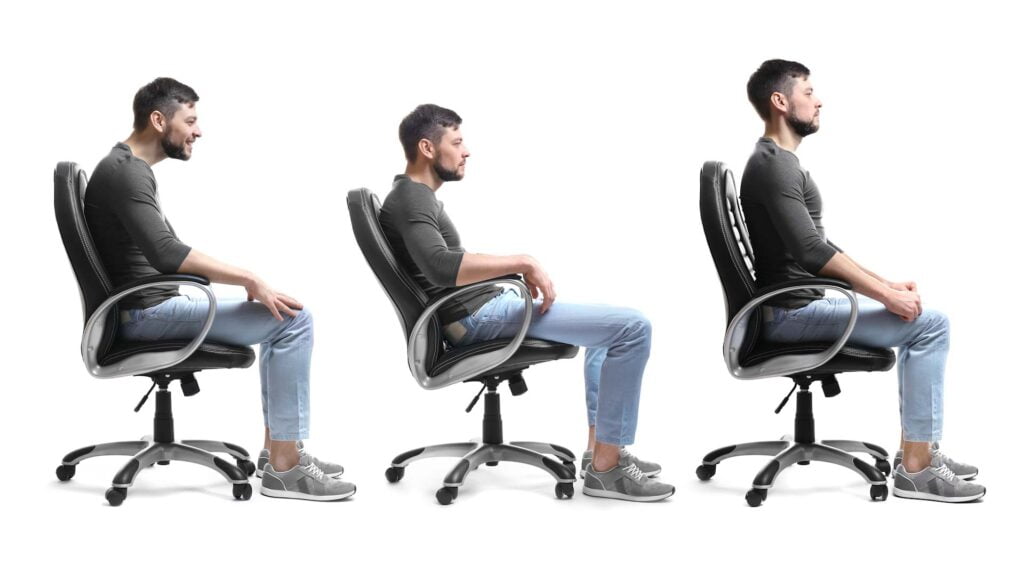
Have you been working remotely since the start of the pandemic? Has the experience been good? Perhaps, you’ve realized that it’s not as fun as you initially thought. Managing your time can be challenging, not to mention your domestic responsibilities can distract you from focusing on your projects.
If you’ve been work from home, you must have tried several strategies to boost your productivity. Maybe you use a to-do list to accomplish your daily goals, or you use several productivity apps to push yourself to perform better. However, have you tried exercise?
For a long time, exercising has been associated with a better physique, a healthier heart, and lower blood pressure. What if we told you exercise has a direct impact on productivity? Making exercise part of your routine can make you more energized, happier, smarter, and more productive. Of course, these effects are relevant to your work performance.
How Exercise Impacts Productivity

So, what happens when you exercise? Your brain cells contain mitochondria, often nicknamed the cell’s ‘power plant’. Mitochondria are responsible for producing adenosine triphosphate (ATP), the chemical that serves as the energy source for all living things. Working out stimulates the development of new mitochondria within your brain cells, boosting your body’s capability to produce more ATP.
So, the more you exercise, the more ATP you generate and the more energy you get. Now, we are not talking just about physical energy. Exercising energizes your brain, which boosts your creativity and performance. These facts are backed by science. For example, a Leeds Metropolitan University study examined the influence of exercise among workers with access to the company gym. Over 200 participants from various companies self-reported their performance daily.
After a period of observation, the results provided valuable insight. On days when employees visited the gym, they reported managing their time more effectively, becoming more productive. They also mentioned better interactions with coworkers. What’s more, they went home feeling happier and more satisfied. While this study was centered on office workers, the effects are the same if remote workers were to exercise regularly.
While weight loss and muscles gain are the obvious advantages of exercising, the greatest productivity benefits include:
- Mental alertness. When you exercise often, your mental alertness increases due to an increase in blood supply to the brain. In turn, you stay sharp and focused throughout your workday. Maintaining this routine ensures that you’re always ready to get up and go.
- Reduced fatigue. Exercising allows the brain to rejuvenate, getting rid of brain fog and strengthening your attention to detail skills.
- Lower stress levels – workers suffer chronic work-related stress that might be caused by overworking. When you exercise, your muscles relax, relieving tension throughout the body.
- Boost in concentration. Exercise keeps the blood, glucose, and oxygen levels high. All these are needed by the brain for better focus and concentration.
- Mental wellbeing. Exercise helps to improve mental health. As noted earlier, the more you exercise, the more ATP is produced. This keeps your brain cells energized, improving your focus and creativity. Exercise has also been shown to increase the size of the area of the brain associated with memory and learning.
- Fewer workday absences. When you exercise daily, you will no longer feel groggy and lazy. Exercise increases your brain’s activity levels and boosts your moods, meaning you’ll be active for the most of the day.
- Improved quality of sleep. A good night’s rest is crucial for improved performance the next day at work. Lack of enough sleep usually triggers other issues, such as stress and depression. Exercising regularly ensures that you wake up rested and relaxed.
- Impulse control. Exercising boosts the release of healthy endorphins that keep you energized. In turn, you’ll be able to block distractions and prioritize the tasks at hand.
How to Incorporate Exercise into Your Routine

Remote employees have busy schedules, and some of them struggle to manage their tasks. Naturally, they’ll use the ‘lack of time’ as an excuse to skip exercising. In some cases, it’s a legitimate excuse. There are days or weeks when work is just too overwhelming and looming deadlines don’t give you time to exercise.
However, saying you don’t have time only means you’re not considering exercise as a priority. Otherwise, you’ll make time, no matter how little, for exercising. Now is the time to stop viewing exercise as something that takes you from work and start considering it as part of your job.
Before COVID, some of you may have been lucky to work in a company that allowed employees to exercise at work. Most companies invested in an onsite fitness center to improve the mental and physical health of employees. This resulted in happier, more satisfied, and productive employees.
Remote working, on the other hand, has its own set of unique challenges – stress, lack of motivation and morale, loneliness, and weight gain. All these negative effects make you less effective at your work.
The thing is, starting out can be tricky. It gets even harder to form a habit of exercising. The good news is that it’s not impossible. The strategies below will help you incorporate exercise into your schedule:
Take Baby Steps
You don’t need to buy expensive equipment or wear the latest gym fashion to start working out. Start small and be realistic. Don’t jump straight to intense exercises that may otherwise have you give up by the second attempt.
Try implementing the “tiny habits” strategy proposed by BJ Fogg, a behavioral scientist at Stanford University. Instead of trying to lose ten pounds in three days, focus on the smaller steps that will get you there eventually. If you’ve been trying to get into shape, you know how painful the entire body feels within the first week. Most people give up after just a few days.
You need to build a habit that you can keep up. For instance, start by taking short 3-5 minute walks and increase the time after every three days. Keep increasing this time until you get to your goal. When exercising becomes a habit, you’ll become more consistent, which can be a major predictor of success.
Identify an Activity You Love
This may sound like a no-brainer, but you may be surprised by the number of people who don’t do it. Don’t go with what’s popular at the moment or pick something hard just because you think it will make you more fit. Instead, choose a physical activity that you love doing.
There are many forms of physical activities that you can engage in. These include playing tennis, dancing, swimming, cycling, jogging, etc. Exercise should be something fun to do. If it’s too hard or you think of it as a chore, you are less likely to be excited to keep up the routine.
The good news is that you don’t need to do rigorous workouts to boost your productivity. Low to moderate exercises do just the trick.
Include Exercise in Your Morning Routine
Exercise increases blood flow, naturally giving you a fresher start to your day. Morning workouts not only kickstart your physical energy but also works wonders on your mental state. As a result, you’re left feeling focused, motivated, and more productive.
Even if you’re a night owl and can’t imagine waking up just to work out, consider this. Your mind is still fresh in the morning and your work schedule has not yet gotten in the way. You’re at an advantage point to set the tone for the rest of your day.
Most of us are guilty of feeling groggy on most mornings. The best way to deal with that is to make exercising part of your morning routine. If you’re consistent, this will develop into a routine.
You can even integrate short and simple body stretch exercises during your breaks to prevent back and neck pain caused by sitting for long hours. You can easily achieve this using a time tracking software like Traqq. You want to take regular breaks to avoid overworking, which eventually leads to burnout. Instead of just sitting and snacking during your breaks, why not take a short walk or cycle for 10 minutes?
Since your creativity and productivity levels drop as the day progresses, these exercises will keep you active and focused. As a result, you’ll work even harder in the afternoons, increasing your productivity.
Join a Group
Remote employees have busy schedules, and some of them struggle to manage their tasks. Naturally, they’ll use the ‘lack of time’ as an excuse to skip exercising. In some cases, it’s a legitimate excuse. There are days or weeks when work is just too overwhelming and looming deadlines don’t give you time to exercise.
However, saying you don’t have time only means you’re not considering exercise as a priority. Otherwise, you’ll make time, no matter how little, for exercising. Now is the time to stop viewing exercise as something that takes you from work and start considering it as part of your job.
Before COVID, some of you may have been lucky to work in a company that allowed employees to exercise at work. Most companies invested in an onsite fitness center to improve the mental and physical health of employees. This resulted in happier, more satisfied, and productive employees.
Remote working, on the other hand, has its own set of unique challenges – stress, lack of motivation and morale, loneliness, and weight gain. All these negative effects make you less effective at your work.
The thing is, starting out can be tricky. It gets even harder to form a habit of exercising. The good news is that it’s not impossible. The strategies below will help you incorporate exercise into your schedule:
Take Baby Steps
You don’t need to buy expensive equipment or wear the latest gym fashion to start working out. Start small and be realistic. Don’t jump straight to intense exercises that may otherwise have you give up by the second attempt.
Try implementing the “tiny habits” strategy proposed by BJ Fogg, a behavioral scientist at Stanford University. Instead of trying to lose ten pounds in three days, focus on the smaller steps that will get you there eventually. If you’ve been trying to get into shape, you know how painful the entire body feels within the first week. Most people give up after just a few days.
You need to build a habit that you can keep up. For instance, start by taking short 3-5 minute walks and increase the time after every three days. Keep increasing this time until you get to your goal. When exercising becomes a habit, you’ll become more consistent, which can be a major predictor of success.
Identify an Activity You Love
This may sound like a no-brainer, but you may be surprised by the number of people who don’t do it. Don’t go with what’s popular at the moment or pick something hard just because you think it will make you more fit. Instead, choose a physical activity that you love doing.
There are many forms of physical activities that you can engage in. These include playing tennis, dancing, swimming, cycling, jogging, etc. Exercise should be something fun to do. If it’s too hard or you think of it as a chore, you are less likely to be excited to keep up the routine.
The good news is that you don’t need to do rigorous workouts to boost your productivity. Low to moderate exercises do just the trick.
Include Exercise in Your Morning Routine
Exercise increases blood flow, naturally giving you a fresher start to your day. Morning workouts not only kickstart your physical energy but also works wonders on your mental state. As a result, you’re left feeling focused, motivated, and more productive.
Even if you’re a night owl and can’t imagine waking up just to work out, consider this. Your mind is still fresh in the morning and your work schedule has not yet gotten in the way. You’re at an advantage point to set the tone for the rest of your day.
Most of us are guilty of feeling groggy on most mornings. The best way to deal with that is to make exercising part of your morning routine. If you’re consistent, this will develop into a routine.
You can even integrate short and simple body stretch exercises during your breaks to prevent back and neck pain caused by sitting for long hours. You can easily achieve this using a time tracking software like Traqq. You want to take regular breaks to avoid overworking, which eventually leads to burnout. Instead of just sitting and snacking during your breaks, why not take a short walk or cycle for 10 minutes?
Since your creativity and productivity levels drop as the day progresses, these exercises will keep you active and focused. As a result, you’ll work even harder in the afternoons, increasing your productivity.
Join a Group
Group exercise classes are more fun and give you a better chance to build relationships. Remote workers can especially get lonely given their nature of work. Try to look for a group activity like pilates, yoga classes, or Crossfit. These activities involve you doing things together, but only as people focusing on individual performances.
Alternatively, you can join collective activities like football, volleyball, double tennis, and so on. Typically, social activities will encourage you to get out of the house more and have fun. All these will culminate in improved productivity and performance at work.
The Best Type of Exercise for Maximum Productivity

Exercise for productivity doesn’t have to be rigorous unless your end goal is to gain muscles. Engaging in low-intensity exercise regimens can go a long way in keeping you motivated at work. Here are some ideas to kickstart your journey towards developing your exercise routine:
1. Walking
An activity as simple as walking has been shown to increase creativity by up to 81 percent. Another study showed that a 30-minute lunchtime walk can help employees get through the afternoon slump. Participants felt less stressed and were more alert to tackle the workload.
Walking is a cheap form of exercise that’s easy to start. To make it more fun, invited your neighbor, colleagues in co-working spaces, or friends. Alternatively, you can let it be your “me” time to regroup and reenergize after a tough morning schedule.
2. Yoga
Yoga is an ancient form of exercise that taps into your physical and mental wellbeing. Yoga techniques stretch your muscles, relaxing your body, and calming your mind. These exercises have a positive effect on motivation and self-esteem, as well as lowering stress levels.
Yoga has also been known to increase energy levels, creativity, and problem-solving skills.
3. Low-Intensity Cardio
Studies show that individuals who engaged in intense exercises reported higher levels of fatigue than those taking low-intensity workouts.
If you’re exercising to lose weight, high-intensity workouts may be great. However, if your goal is to increase productivity, engage in low-intensity aerobic exercises, like swimming, jogging, step aerobics, cycling, and rowing.
The Bottom Line
When developing your exercise routine, keep in mind that you’re exercising to increase productivity, mood, and energy, not strength. Start small and stick to short bursts of workouts. Be sure to pick an activity you like. After all, you’re after a healthy lifestyle, improved cognitive functions and concentration, and better work performance.
Remember, tracking your time can help you get more done, without feeling fatigued. Plus, you’ll know what needs to be done when, instead of just guessing. In turn, you become more efficient and effective in your work.

